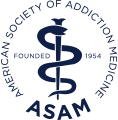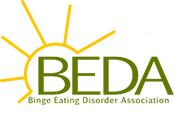Carolina House provides leading body dysmorphic disorder treatment to ensure long-lasting recovery for a healthier and more satisfying life.
Understanding Body Dysmorphic Disorder
Learn about body dysmorphic disorder treatment
Many individuals have physical features that they dislike about themselves. For example, some might feel like their body is disproportionate or that they do not like the shape of their nose. While some amount of bodily dissatisfaction is common, people who struggle with body dysmorphic disorder (BDD) endure extreme distress regarding the appearance of their bodies.
For some people who have BDD, the disorder might drive them to attempt to obtain a great deal of muscle, causing them to sometimes engage in dangerous eating behaviors or to start using steroids. For others, BDD can cause dangerous eating patterns, excessive workouts, or other attempts to change their physical appearance. People of all genders who grapple with BDD might also turn to the use of plastic surgery. Body dysmorphic disorder involves more than just a sense of self-consciousness, as those who struggle with this disorder might grow so anxious about their appearance that they avoid social interactions at all costs, and possibly even consider suicide. Since this disorder surrounds one’s discomfort with their own body, those with BDD are more likely to also battle with eating disorders.
Those who have an eating disorder and co-occurring body dysmorphic disorder can obtain treatment that addresses the underlying causes of the eating disorder, all while determining how body dysmorphic disorder relates to that condition.
Statistics
Body dysmorphic disorder statistics
Body dysmorphic disorder is one of the most common mental health conditions. Roughly 1-3% of individuals have been diagnosed with BDD, with those numbers varying, as 53% of those who obtain plastic surgery suffer from this condition. However, research points out that these numbers might be an underestimate, as approximately 30% of those within inpatient settings reported strong feelings of embarrassment surrounding not wanting to admit their body image issues.
Causes and Risk Factors
Causes and risk factors for body dysmorphic disorder
The exact cause of BDD is still not yet determined, however, researchers agree that this disorder is likely caused by a combination of both genetic and environmental factors, such as:
Genetic: Studies how that one’s genetic make up can influence their likelihood of developing BDD. Those who have first-degree relatives with BDD are more likely to develop this disorder than those who do not share this background.
Environmental: Environmental factors can also play a role in one developing BDD. Those who have experienced negativity surrounding their body image are more likely to develop this disorder, as are those who have been picked on during childhood, raised by body-focused parents, and/or trapped in a society that requires one to fit a specific body image standard.
Risk Factors:
- Family history of mental illness
- Personal history of mental illness
- Obsessive-compulsive traits
- Personality factors, such as low self-esteem
- Other mental illness
Signs and Symptoms
Signs and symptoms of body dysmorphic disorder
The symptoms of BDD can vary from individual to individual based on genetic background and personality. Below are some of the most common signs and symptoms of this disorder:
Behavioral symptoms:
- Seeking reassurance from others about physical appearance
- Excessive spending on beauty products
- Other idiosyncratic behaviors, such as drinking water to make one’s face appear fuller
- Disguising certain body parts with clothing
- Frequently checking the mirror
- Picking at one’s skin
- Excessive grooming, exercise, and hygiene behaviors
- Extreme exercise routines
Physical symptoms:
- Medical conditions, such as diabetes or malnutrition, from poor eating habits
- Scabs and infection from picking at skin
- Weight changes due to excessive exercise or unhealthy eating
- Complications from cosmetic surgery
Cognitive symptoms:
- Poor memory due to inability to focus
- Poor attention and concentration
- Distractibility
Psychosocial symptoms:
- Suicidal thoughts
- Poor relationships
- Avoidance of social situations due to fear of ridicule
- Poor self-esteem
Effects
Effects of body dysmorphic disorder
BDD is a serious issue that can cause a number of dangerous consequences to occur if it goes untreated. Some of these effects can include:
- Side effects of steroids including breast development, shrunken testicles, and infertility in men, and deeper voice, increased body hair, and infrequent periods in women, as well as acne, tendonitis, tumors, and aggressive behaviors in people of all genders
- Repeated hospitalizations
- Medical conditions due to lack of proper nutrition
- Development of a co-occurring mental health disorder
- Suicide attempts
- Loss of relationships
- Poor performance at work or school
- Loss of job
Co-Occurring Disorders
Body dysmorphic disorder and co-occurring disorders
Those who grapple with BDD also tend to struggle with other mental health conditions at the same time. Sadly, those who have BDD are more likely to develop eating disorders including anorexia and bulimia. Other conditions that might occur alongside BDD can include:
- Bipolar disorder
- Posttraumatic stress disorder
- Personality disorders
- Anxiety disorders
- Obsessive-compulsive disorder
- Depressive disorders











